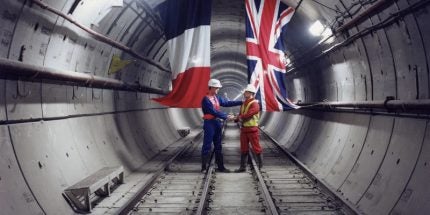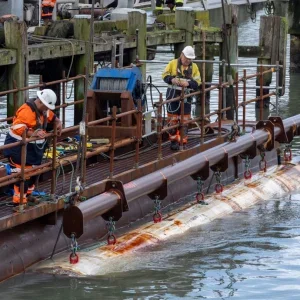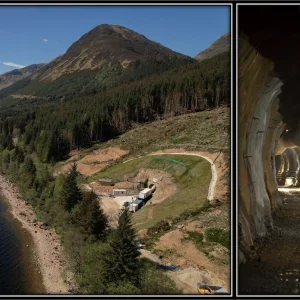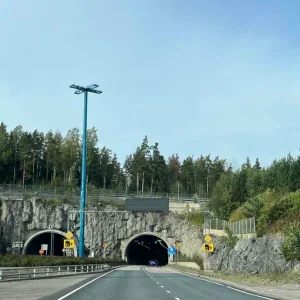
The tunnel linking France and the UK was opened on May 6, 1994, and the occasion was marked by the Queen and the French president, François Mitterrand, making the journey between the two countries.
To commemorate the anniversary, Getlink and its subsidiary Eurotunnel paid tribute to those who contributed to the success of the project from the outset, as well as those now shaping the future of passenger, freight and energy transport between the UK, France and continental Europe.
The 50km-long tunnel includes 37km undersea – the longest underwater segment in the world – 75m below sea level. More than 13,000 people, from both sides of the Channel, were involved in its construction.
The tunnel is a high traffic infrastructure, with an average of one train every four minutes, or 400 trains a day at different speeds: 160km/h for the high-speed trains, 140km/h for the LeShuttle shuttles operated by Eurotunnel and 120km/h for the national rail freight trains.
During the past 30 years, half a billion rail passengers have travelled through the tunnel.
In 2022 the 1GW capacity ElecLink interconnector was installed in the tunnel to balance the energy needs of the UK and France.
Getlink chairman Jacques Gounon said the Channel Tunnel was “an exceptional human adventure” that had revolutionised relations between Europe and Great Britain.
“Already ahead of its time when it was inaugurated, it is still incredibly modern, offering millions of people and goods the possibility of crossing the Channel very quickly while respecting the environment. This success has been made possible by the visionaries who designed it, the investors who financed it, the builders who built it, and the employees who operate it every day. With all of them, Eurotunnel has entered the history books,” he said.
Getlink CEO Yann Leriche paid tribute to the tunnel’s designers and builders who “as true visionaries, designed an infrastructure that is unique in the world”.
“The importance of the vital link between the UK and the European continent has been reaffirmed more than ever, and its role in decarbonising trade in Europe makes it an exceptionally modern structure,” he said.







